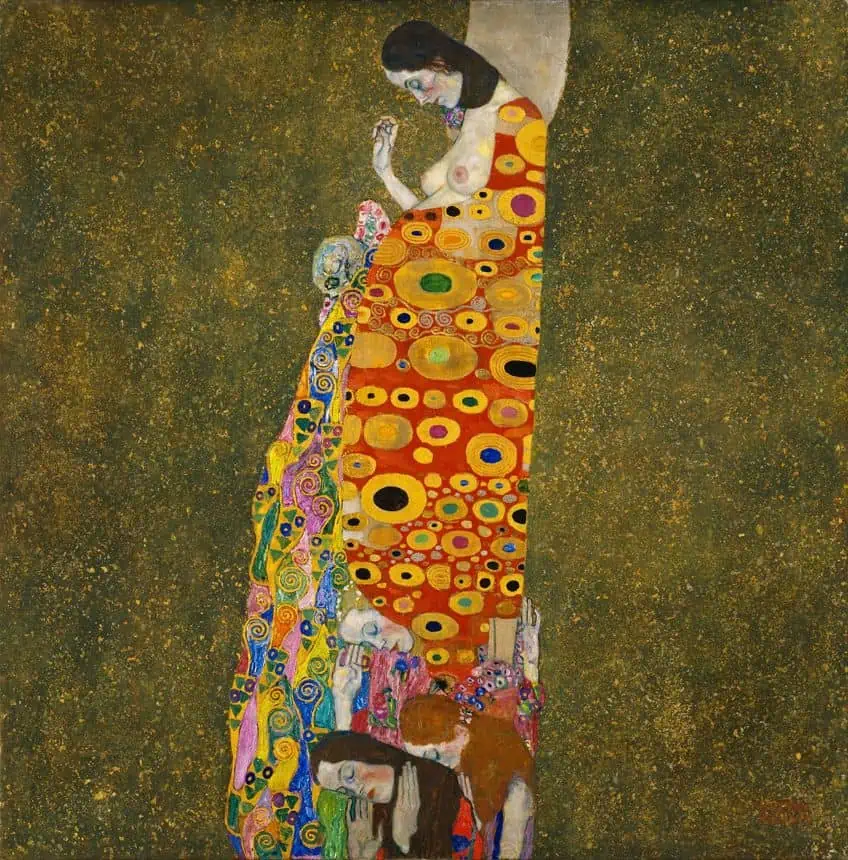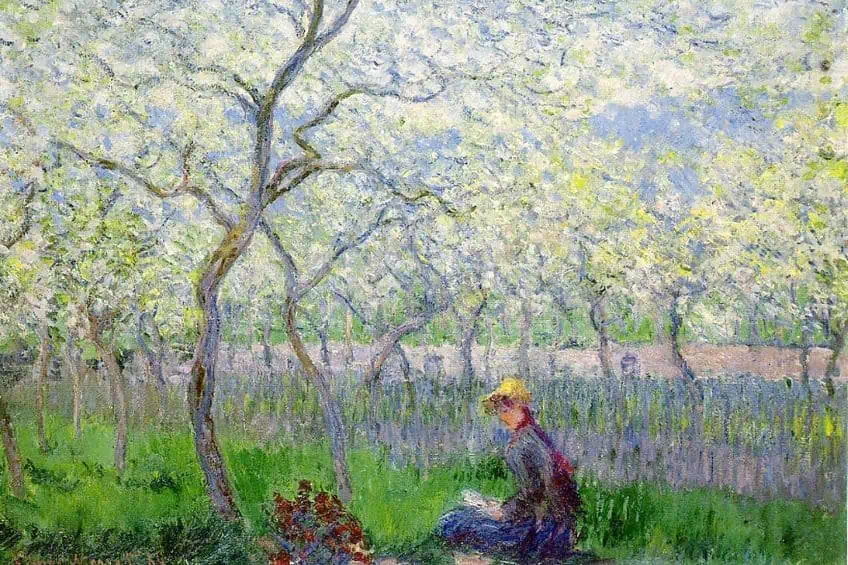What Is 2D Art? – Defining Art in the Second Dimension
This post may contain affiliate links. We may earn a small commission from purchases made through them, at no additional cost to you.
What is 2D art? There are many different 2D artworks in the world and many of them are worth examining. This article will look at a definition of 2D artwork, the types of 2D art, the differences between 2D and 3D art, and, finally, a discussion of the possible future of 2D art in general. Let us get started and have a closer look at 2D art!
Table of Contents
What Is 2D Art?
2D art, or two-dimensional art if you want to spell things out, is a term that may immediately appear somewhat confusing and lead one to think of the digital distinction between 2D and 3D digital artworks. However, it is actually far less complicated than that. 2D art is, quite simply, art that is produced on a two-dimensional surface of some kind. It is, quite possibly, the most common form of art and it has existed for as long as humans have produced art.
 Olive Trees with the Alpilles in the Background (1889) by Vincent van Gogh, located in the Museum of Modern Art in New York City, United States. This painting was created with oil paint on canvas; Vincent van Gogh, Public domain, via Wikimedia Commons
Olive Trees with the Alpilles in the Background (1889) by Vincent van Gogh, located in the Museum of Modern Art in New York City, United States. This painting was created with oil paint on canvas; Vincent van Gogh, Public domain, via Wikimedia Commons
Types of 2D Art
If 2D art is so simple, then what is 2D art? What is it in tangible examples? Well, two-dimensional art is anything that is produced on a flat surface of some kind, and therefore only contains two dimensions: height and width. This means that paintings, drawings, prints, and photographs are all forms of 2D art. These are the different types, and this makes 2D art pretty much the most basic form that exists. In addition, because two-dimensional simply means that it is applied to a flat surface, the majority of the most famous artists were also 2D artists. When you think of painters, photographers, and illustrators, they are all 2D artists.
However, while 2D art is ancient, and it can be found in cave paintings, canvas paintings, fresco paintings, and whatever other type of flat surface painting you can imagine, the digital age has led to newer forms of 2D art.
Pixel art, which makes use of small colored squares layered around one another to produce an image, is a common form of contemporary 2D art, another example of 2D art, and it can be found in animations and video games. Vector art, which is made using mathematical formulae, is another new form of 2D art. Even realistic art, which makes use of perspective and other naturalistic methods to appear three-dimensional, if it is applied to a canvas or a similar flat surface, then it is still 2D art.
 Hope II (1907 – 1908) by Gustav Klimt, located in the Museum of Modern Art in New York City, United States; Gustav Klimt, Public domain, via Wikimedia Commons
Hope II (1907 – 1908) by Gustav Klimt, located in the Museum of Modern Art in New York City, United States; Gustav Klimt, Public domain, via Wikimedia Commons
This goes to show that the types of 2D art are multitudinous. 2D artists are everywhere and many artists get their start in purely two-dimensional forms. This is because getting a hold of a pencil can be significantly easier than finding the materials necessary for certain forms of 3D art. However, what is the difference between 2D and 3D art?
The Differences Between 2D and 3D Art
The primary difference between these two forms is that two-dimensional art is art that is made on a surface that only includes two dimensions: height and width. An example of 2D art would therefore be a painting because it does not have breadth. 3D art, on the other hand, includes all three dimensions: height, width, and breadth. An example of 3D art would therefore be a sculpture in the classical sense or a 3D video game in the digital.
However, an interesting thing about the nature of the world is that most 3D art can only be accessed via a two-dimensional medium and, technically, all two-dimensional art is, technically, three-dimensional.
Here’s why: if a 3D-rendered artwork is digitally created and is exhibited on a screen, that screen is a 2D representation of the 3D item. Every time you rotate the 3D object, a human is still perceiving it through a 2D medium. On the other hand, all objects in our world are three-dimensional. A canvas is a three-dimensional item. It does have a width. That width is just so small that it does not register to us in that way. Brush strokes, for instance, are not applied with the exact same force, and so some parts of a painted canvas will technically be thicker than other parts. This means that even 2D art is 3D, but, to be honest, this is a semantic argument that is mostly for fun. So, if you want to irritate some people the next time you’re with a group of fellow humans, use this argument!

The Future of 2D Art
Some claim that the end of 2D art is upon us. However, this is not the case. Traditional two-dimensional art, like paintings, is still bought and sold around the world. People still paint for fun and for profit. However, the advent of sophisticated digital tools has meant that we now have new ways to produce 2D art. In fact, we can use 3D modeling to produce 2D artworks. For instance, a Pixar film is made using 3D animation, but it is recorded from a flattened perspective and presented in a 2D medium.
 An Orchard in Spring (1886) by Claude Monet; Claude Monet, Public domain, via Wikimedia Commons
An Orchard in Spring (1886) by Claude Monet; Claude Monet, Public domain, via Wikimedia Commons
Furthermore, much of contemporary 3D art is often planned using 2D methods. For instance, when producing a 3D film like the abovementioned Pixar example, two-dimensional storyboards are used to plan the film before any of the 3D animation work has started. So, 2D art is still used, but it has also taken on new functions and become a part of the digital artwork landscape.
And so we come to the end of our look at 2D art. We asked the question: “What is 2D art?”, and came away with an answer. We examined the different types of 2D art, a brief history of it, how it differs from 3D, and the future of the form. So, get out there and check out 2D art, because 2D art isn’t going anywhere.
Frequently Asked Questions
What Is 2D Art?
2D art is any artwork that is applied onto a flat surface. This means that it makes use of two dimensions, namely height and width. So, much of what we consider to be art can be classified as 2D art, and many of the most famous 2D artists are also the most famous artists to have ever lived, such as Vincent van Gogh, Leonardo da Vinci, and Jackson Pollock.
What Are the Different Types of 2D Art?
There are many different types of 2D art. These include paintings, drawings, prints, photographs, and many others. If something is projected onto a two-dimensional surface, it is an example of 2D art. This also means that two-dimensional art is, quite likely, the most common variety of art because of the ease with which the materials can be acquired.
Is 2D Art Still Prominent?
2D art is still an immensely prominent form of art. While 3D art has become more common, much of it is still planned using 2D methods. In addition, even when digital artworks are produced in a 3D dimensional sense, they are usually displayed in a two-dimensional space, such as on a screen.
In 2005, Charlene completed her wellness degrees in therapeutic aromatherapy and reflexology at the International School of Reflexology and Meridian Therapy. She worked for a company offering corporate wellness programs for several years before opening her own therapy practice. In 2015, she was asked by a digital marketer friend to join her company as a content creator, and it was here that she discovered her enthusiasm for writing. Since entering the world of content creation, she has gained a lot of experience over the years writing about various topics such as beauty, health, wellness, travel, crafting, and much more. Due to various circumstances, she had to give up her therapy practice and now works as a freelance writer. Since she is a very creative person and as a balance to writing likes to be active in various areas of art and crafts, the activity at acrylgiessen.com is perfect for her to contribute their knowledge and experience in various creative topics.
Learn more about Charlene Lewis and about us.







